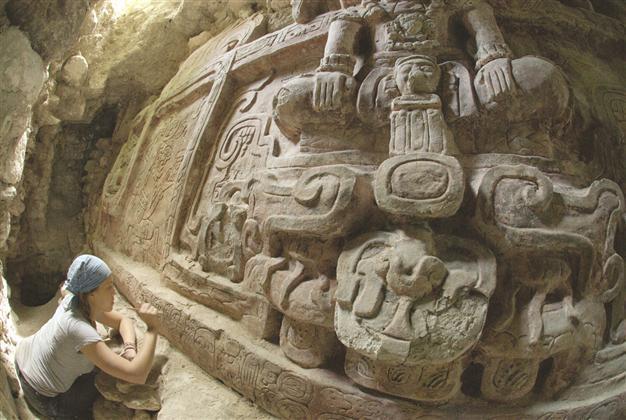‘Extraordinary’ Mayan frieze found in Guatemala
GUATEMALA CITY - The Associated Press

An archaeologist cleans an inscription below a high-relief stucco sculpture recently discovered in the Mayan city of Holmul in Peten, Guatemala. AP photo
Archaeologists have found an “extraordinary” Mayan frieze richly decorated with images of deities and rulers and a long dedicatory inscription, the Guatemalan government said Aug. 7. The frieze was discovered by Guatemalan archaeologist Francisco Estrada-Belli, a professor at Tulane University’s Anthropology Department, and his team in the northern Province of Peten, the government said in a joint statement with Estrada-Belli.
“This is an extraordinary finding that occurs only once in the life of an archaeologist,” Estrada-Belli said.
The archaeologists were exploring a Mayan pyramid that dates to A.D. 600 in an area that is home to other classic ruin sites when they came upon the frieze. “It’s a great work of art that also gives us a lot of information on the role and significance of the building, which was the focus of our research,” Estrada-Belli said.
The high-relief stucco sculpture, which measures eight meters by two meters, includes three main characters wearing rich ornaments of quetzal feathers and jade sitting on the heads of monsters.
The frieze, which was found in July, depicts the image of gods and godlike rulers and gives their names.
The dedicatory inscription “opens a window on a very important phase in the history of the classical period,” Estrada-Belli said.
The inscription is composed of some 30 glyphs in a band that runs at the base of the structure.
The text, which was difficult to read, was deciphered by Alex Tokovinine, an epigraphist at Harvard University.
